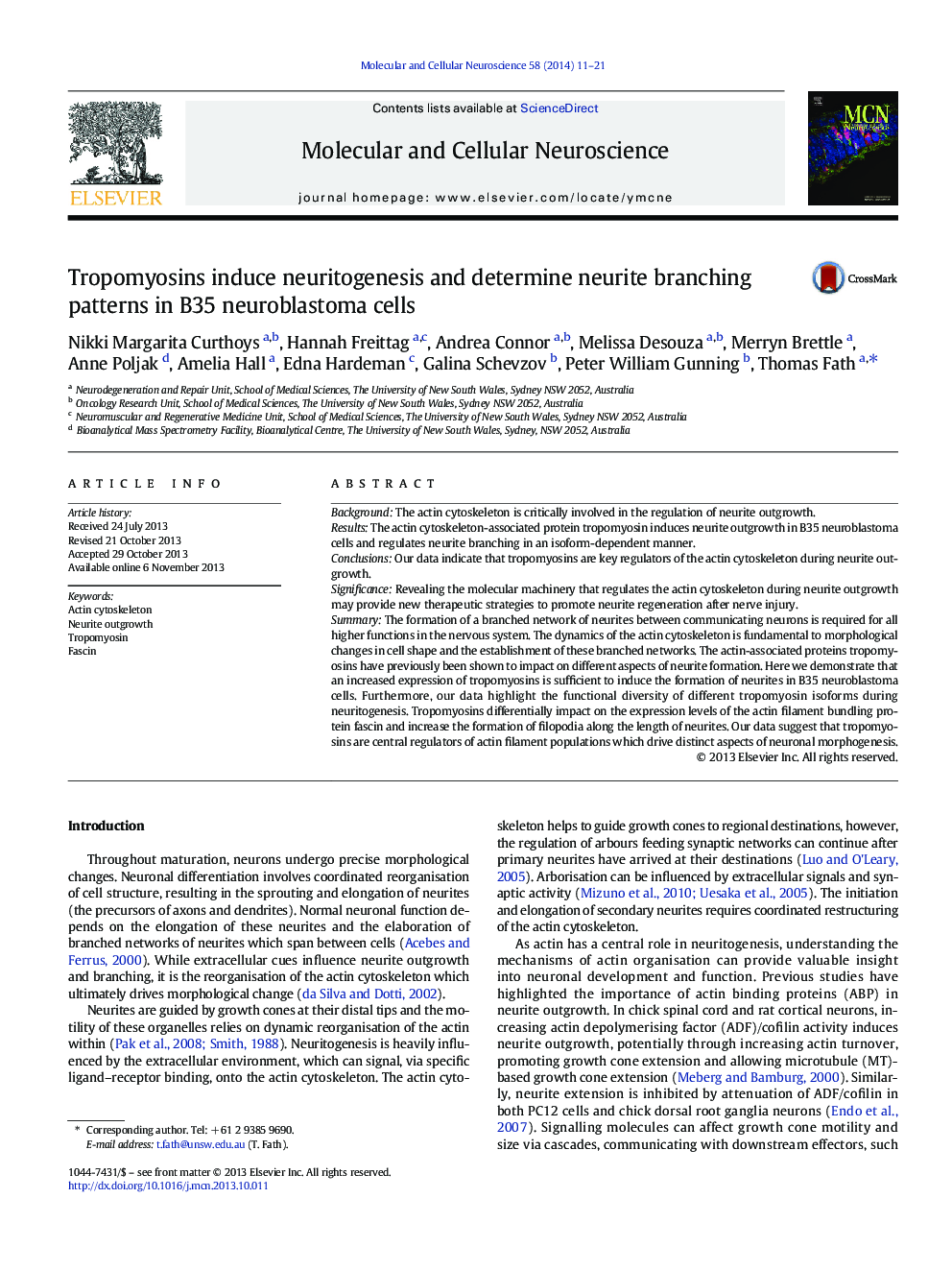| Article ID | Journal | Published Year | Pages | File Type |
|---|---|---|---|---|
| 2198488 | Molecular and Cellular Neuroscience | 2014 | 11 Pages |
BackgroundThe actin cytoskeleton is critically involved in the regulation of neurite outgrowth.ResultsThe actin cytoskeleton-associated protein tropomyosin induces neurite outgrowth in B35 neuroblastoma cells and regulates neurite branching in an isoform-dependent manner.ConclusionsOur data indicate that tropomyosins are key regulators of the actin cytoskeleton during neurite outgrowth.SignificanceRevealing the molecular machinery that regulates the actin cytoskeleton during neurite outgrowth may provide new therapeutic strategies to promote neurite regeneration after nerve injury.SummaryThe formation of a branched network of neurites between communicating neurons is required for all higher functions in the nervous system. The dynamics of the actin cytoskeleton is fundamental to morphological changes in cell shape and the establishment of these branched networks. The actin-associated proteins tropomyosins have previously been shown to impact on different aspects of neurite formation. Here we demonstrate that an increased expression of tropomyosins is sufficient to induce the formation of neurites in B35 neuroblastoma cells. Furthermore, our data highlight the functional diversity of different tropomyosin isoforms during neuritogenesis. Tropomyosins differentially impact on the expression levels of the actin filament bundling protein fascin and increase the formation of filopodia along the length of neurites. Our data suggest that tropomyosins are central regulators of actin filament populations which drive distinct aspects of neuronal morphogenesis.
